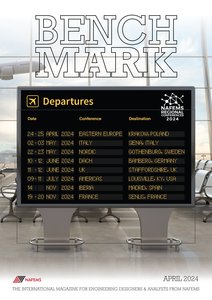
What is structural failure? Structural failure can be defined as the point when a limiting condition occurs such that the structure can no longer perform its primary function. In some applications, this may be the initiation of a crack in a turbine blade, while in others it may be when a crash structure on a car can no longer deform/fracture to absorb more energy from the crash. Failure may also be progressive over a long period of time, such as a fatigue crack in a turbine disc or creep failure of a bolted connection. As scientists and engineers, we are responsible for designing and analyzing structures to prevent failure from occurring during the service life of the structure or component. In order to prevent failure, we need to understand when and how the failure is likely to occur.
Modeling structural failure by single deterministic analysis during design can often be conservatively biased through the use of approximations in material properties and bounds to input data combined with simplifications of the model and assumptions made. For a ‘go/no-go’ approach to design, this can be perfectly acceptable, but it does not inform the designer of the safety or excess margin in a meaningful way. The ability to accurately predict a mode of failure enables a consideration of the variability in properties / geometry / loading to be investigated. Multiple repeats of a deterministic model enable results to then be interpreted in a probabilistic manner. This is a key stepping stone to optimization of designs or permitting a time/cyclic dependent lifetime to a target tolerable failure frequency.
It is hoped that this article will stimulate thoughts on the potential of modeling structural failure so that the potential economic benefits of a component can be weighed against the expense of a design path that requires more computational effort.



